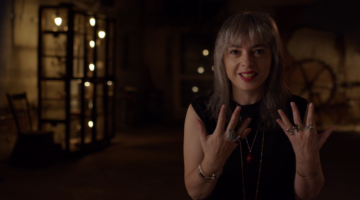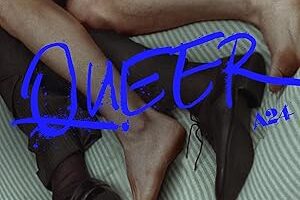Tropic Sprockets / The Psychadelia of Roma and Easy Rider
By Ian Brockway
Thinking of the past and present, there are two films “Roma” (2018) and “Easy Rider” (1969) that appear to become parallel and align. Though the two works are disparate in tone and technique, they share striking elements in common. Both are existential and profound works that highlight the movement of nature and emphasize the individual as a struggling being, thrown about by the whim of society. “Easy Rider” in particular is a grim yet colorful warning of what awaits when one chooses to strike out on his or her own with spontaniety.
Directed by Dennis Hopper, “Easy Rider” is a road epic, featuring two bohemians: the reserved Wyatt (Peter Fonda) and the childlike Billy (Dennis Hopper) who make money selling cocaine and then ride on motorcycles, in the hopes of reaching New Orleans. Wyatt picks up a quiet hippie named Jesus (Antonio Mendoza). Jesus warns the giggling Billy that “the people this place belongs to are buried right under you.” Billy laughs in disbelief and confusion. The three enter a desert commune where noise abounds. Kids play with toy guns, the first real sign of aggression. Billy reacts as if all things are a game. After dinner there is an excellent revolving pan showing all of the commune members posed as in a religious painting by Titian or Carravagio. Hopper is revolutionary here, saying outright that the individual is God, full of spiritual import.
The bright and florid representation of the Western sky is a Earthly LSD trip. There is no need for hallucinogens. Despite the dated dialogue and ubiquituous tittering, Hopper is telling us that the cinema is IT and all we need.
While “Easy Rider” blazes with vivid color, “Roma” is in glorious black and white. The film by Alfonso Cuaron tells the story of a housekeeper, Cleo (Yalitza Aparicio), who struggles to be spontaneous and appreciated as a human being. Cleo’s environment, in contrast to Billy of “Easy Rider” is one of windows and doors, soap suds and yelling children. Cleo is sequestered by domestic duties, but once outside the walls of the house, her view is as vast as anything seen in the previously mentioned film. In “Roma” there is also a toy gun scene. Cleo, unlike Billy, hardly reacts, preoccupied with washing. But later she rests on a stone slab, pretending to be dead—a passive and shut-in figure.
Cleo observes the doctor’s big chrome car with fascination in much the same way as a motorcycle. Both vehicles in the two films symbolize escape and transendence, a launch on the open highway. Where Wyatt and Billy see threatening sheriffs, Cleo faces an aggressive disrespectful boyfriend Fermin (Jorge Antonio Guerrero) who is just as malevolent as any law enforcement. A car is the only freedom.
Both films illustrate incidents of violence while a crystal clear sky with mountains and hills reflects a natural splendor, disinterested and without a care. Cleo is in the midst of a gun battle. Billy’s friend is murdered in front of him. The clouds slip along in these two films without any harbinger or omen. Easy Rider’s snarl faced, racist and homophobic men (as grotesque as any Hieronymus Bosch painting) have given way to unfeeling boyfriends and nurses who utter platitudes and have little concern for privacy and death.
Instead of pot-smoking chats there is talk of husband infidelity but both films feature clutter and confusion, rendered with hyper clarity. The scary masks of Mardi Gras become broken dolls. An acid trip transforms into claustrophobia in black and white. Dennis Hopper’s propulsive parade in red white and blue becomes Alfonso Cuaron’s monochrome march of civil unrest.
Cuaron and Hopper highlight characters that propel themselves automatically—players on the stage of life. Wyatt and Billy observe events under the filter of pot smoke, looking and laughing. Cleo walks from one event to the next, her eyes perpetually open. She might watch her boyfriend yell and slice the air. She might be in the middle of a fire, a shootout or a violent protest. Any event is given equal neutrality, just as in George’s Easy Rider stabbing. Billy has a luxurious dinner and life rolls on. “Easy Rider” depicts a natural world that is pacific and grand, while “Roma” symbolizes a nature that is hostile and threatening: waves overwhelm children and fires rage.
Though these directors are different, Cuaron and Hopper share the same philosophy. Freedom of action is the way. “Easy Rider” is a classic portrait of 1960s America which jarringly highlights a toxic culture clash that still exists today, while “Roma” creates the life of a working woman which unfolds in episodes of terror and tranquility, without warning as in an opium dream.
Write Ian at [email protected]
[livemarket market_name="KONK Life LiveMarket" limit=3 category=“” show_signup=0 show_more=0]






No Comment